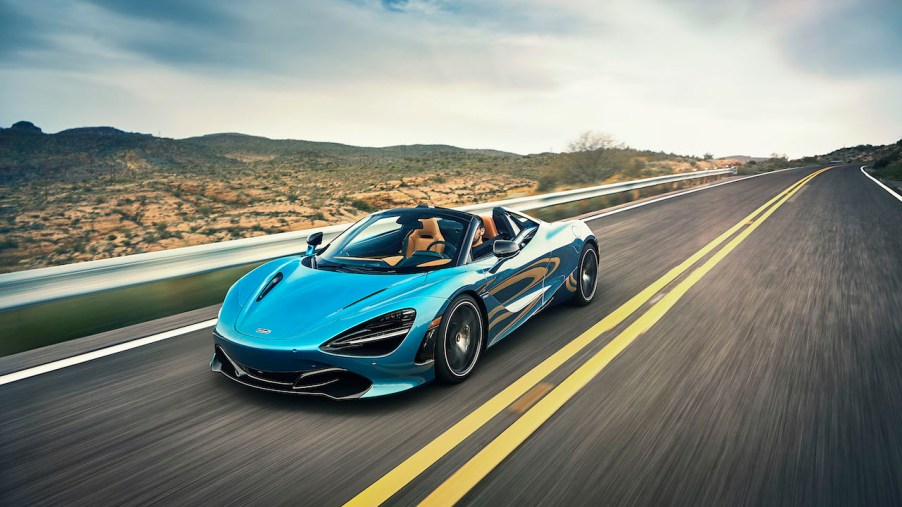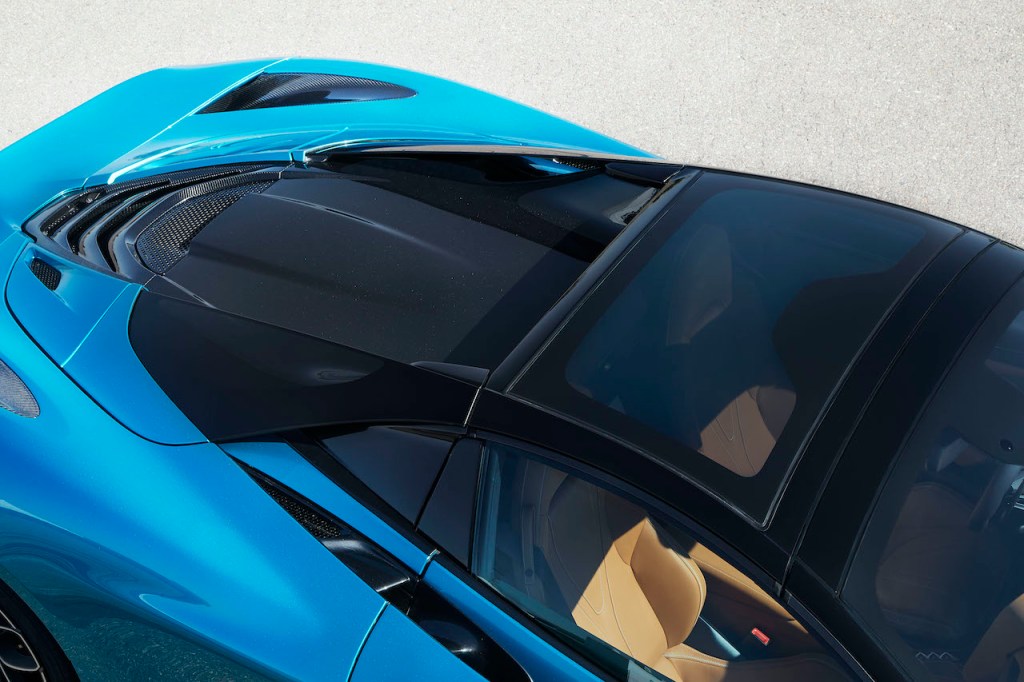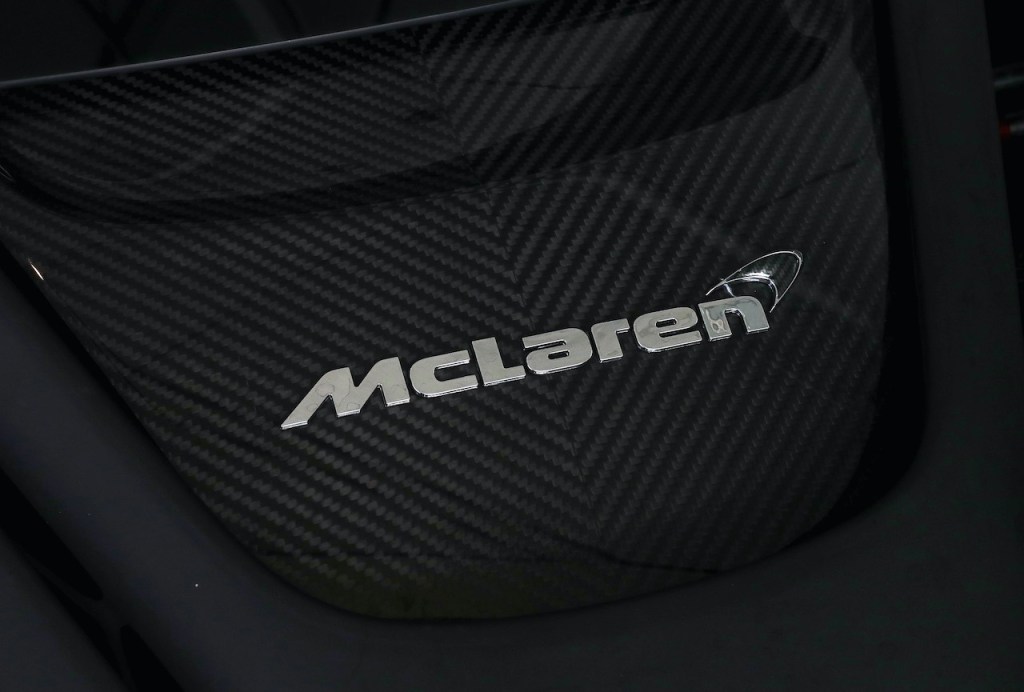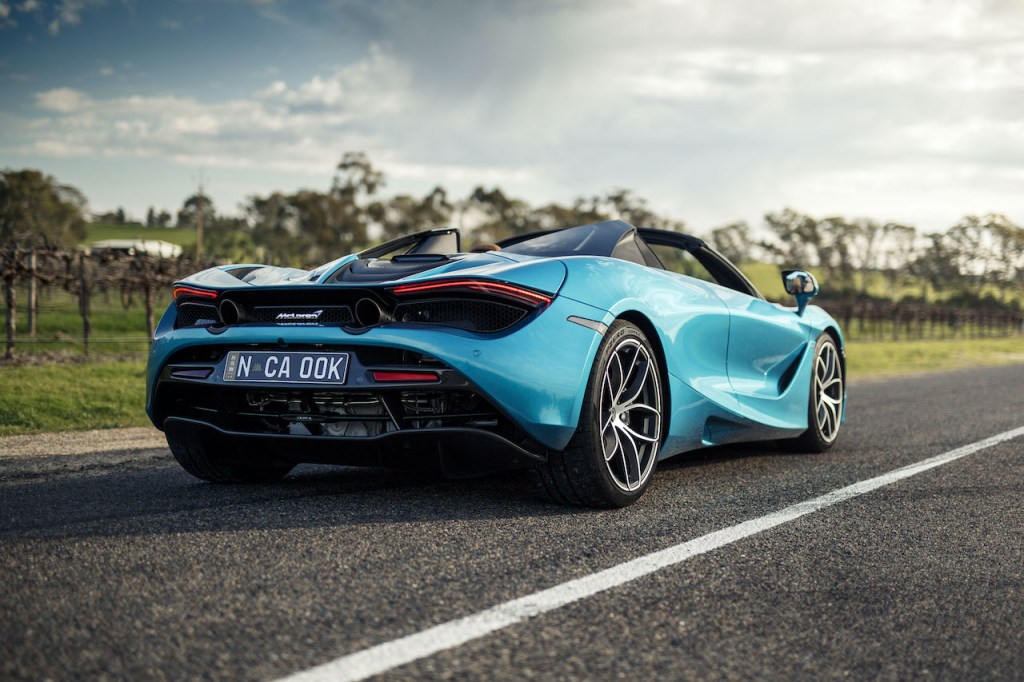
This McLaren Has a $9,100 Roof That Tints Itself With Electricity
McLaren is commonly known for its incredible engineering toward performance. However, it has taken their ingenuity in recent years and applied it to their cars’ interiors. The 2020 McLaren 720S Spider is a hardtop convertible that uses a unique element, a glass roof. Naturally, clear glass offers no shade from the sun. McLaren’s engineers thought of such a scenario and decided to use electrochromic glass. Electrochromic glass is unique thanks to its ability to tint itself with the help of electricity. In the 720S Spider, the fancy roof panel is a $9,100 optional extra.
How can glass tint itself with an electric charge?

Electrochromic glass is not exclusive to the 720S Spider given that McLaren has utilized it in other models. This unique glass is often used in construction thanks to its ability to block light very quickly. The technology is quite simple.
According to ExplainThatStuff, electrochromic glass features up to five layers with a separator in the middle. Two electrodes settle on either side and electrical contact layers attach to either side of the electrodes.
Depending on the electric charge’s positive or negative state, the lithium ions migrate via the separator from one layer to another. When the ions are bunched together in the outermost layer, they reflect light and make the glass opaque. To make the glass clear again, the system just reverses the electric charge.
How does glass used in skyscrapers end up in a supercar?

The McLaren 720S Spider features a control panel just above the driver. The touch panel allows for various settings that control how much light the roof lets in. As a result of it being glass, this technology blocks sunlight, but not heat. The 720S Spider’s top is capable of allowing from 95 to 30 percent of light into the cabin.
A complex system like this would not make sense in a supercar if it required constant electricity. The only time the 720S has to run an electrical current through its roof is between transparent and opaque. The electrochromic roof’s efficiency makes it perfect for use in a road car, and other manufacturers like Mercedes-Benz have used it in the price. Like any McLaren optional extra, this roof is a $9,100 option on the 720S Spider and $6,000 on the GT.
The rest of the McLaren 720S Spider is just as impressive

If that amount of focus has gone into its roof alone, then expect the rest of the McLaren 720S Spider to be just as impressive. The British supercar has a 4.0-liter twin-turbocharged V8 producing 710 hp and 568 lb-ft of torque. Power reaches the rear wheels via a dual-clutch automatic transmission.
The 720S Spider can reach 60 mph in just 2.8 seconds and a top speed of 212 mph with its roof up. If the costly roof wasn’t a clue, the 720S Spider is by no means a cheap car, and its $317,500 starting price confirms it. Load the 720S with other optional extras, striking colors, unique materials, and you could end up spending very close to $400,000.


